Introduction
Samsung have spared no effort to protect the Galaxy S III against any odds. What we get as a result is the most amazing blend of performance and features we are likely to see this year.
The Koreans took their time with the new flagship, giving the predecessor a full year at the helm. But they were taking no chances and they've got the spec sheet to prove it. With most of the hardware made by Samsung themselves, the Galaxy S III is an endless list of mind-blowing numbers. The quad-core beast packs a 720p Super AMOLED screen and a massive battery, but keeps its slim waistline.
And that's just the tip of the iceberg. Here's the underwater part:
Key features
- Quad-band GSM and quad-band 3G support
- 21 Mbps HSDPA and 5.76 Mbps HSUPA support
- 4.8" 16M-color Super AMOLED capacitive touchscreen of HD (720 x 1280 pixel) resolution; Corning Gorilla Glass 2
- Android OS v4.0.4 with TouchWiz launcher
- 1.4 GHz quad-core Cortex-A9 CPU, Mali-400MP GPU, Exynos 4 Quad chipset, 1GB of RAM
- 8 MP wide-angle lens autofocus camera with LED flash, face, smile and blink detection
- 1080p HD video recording at 30fps
- Dual-band Wi-Fi 802.11 b, g, n
- GPS with A-GPS connectivity; GLONASS support, Digital compass
- 16/32/64GB internal storage, microSD slot
- Accelerometer, gyroscope and proximity sensor
- Standard 3.5 mm audio jack
- microUSB port with USB host and TV-out (1080p) support, MHL, charging
- Stereo Bluetooth v4.0
- FM radio with RDS
- Great audio quality
- Super slim at only 8.6mm
- 2MP secondary video-call camera
- Full Flash for the web browser
- NFC support
- Document editor
- File manager comes preinstalled
- Extremely rich video and audio codec support
- Impressively large 2100 mAh battery
Main disadvantages
- All-plastic body of dubious aesthetics
- No dedicated camera key
- microSIM slot
- S Voice is hardly as functional as ads might make you believe
A long list of assets and a rather short list of cons speak volumes about the amount of effort that went into building the Samsung I9300 Galaxy S III. Were they just trying to improve each and every aspect of the user experience over the Galaxy S II, or was creating the ultimate droid their goal all along? The more we think about it, the more it looks the same.
Samsung are in a way raising their own bar yet again. But the competition hasn't been idle either. We've seen proof already that the Galaxy S III is a smartphone that thrives on a challenge. It now has the stage all to itself. You could call it a curtain call if the story of the Galaxy S III wasn't just about to begin.
Retail package is par for the course
The Samsung I9300 Galaxy S III retail package contains all the basic accessories, required for the everyday use of the smartphone. There's the microUSB data cable, which couples with the wall-mount charger, or is used for charging off a computer connection and file transfers.
There's also a single-piece headset of reasonable, if unspectacular, looks and that's it. There's no microSD card supplied (though with 16GB of internal memory you still get adequate storage out of the box). There's no TV-out adapter either or any other extra value accessories. This might be disappointing for a flagship device, but the Galaxy S III's direct rivals don't offer much more than that, so we won't be deducting any points here.
Samsung I9300 Galaxy S III 360-degree spin
At 136.6 x 70.6 x 8.6 mm, the Samsung I9300 Galaxy S III is certainly not the most compact smartphone around, but you could hardly expect anything better with a 4.8" screen. In fact, Samsung engineers deserve credit for fitting such a massive display in a chassis, which is a mere 4.5mm wider and just over a centimeter taller than its predecessor's.
The Samsung Galaxy S III isn't too heavy either - 133g sounds more than acceptable given its size and, while it will certainly be felt in your pocket, it is by no means a burden.
Design and display
We were less than impressed with the Samsung I9300 Galaxy S III from the first official photos. The fact that the it borrowed design ideas from the last two Nexus smartphones instead of building on the sleekness of the S II was generally met with frowns around the office.
However, once we held the device in our hands, we realized that the Samsung I9300 design is actually not too bad. For one, its materials look better in person than they do on photos and the sturdy build helps a lot too. Then there's the impressively slim waistline, which really adds to the general appeal of the device.
And yes, we still feel the glossy finish is a questionable choice as it lacks the high-end vibe that a smartphone of this caliber deserves. However, the Samsung Hyperglaze coating makes sure the S III doesn't look like a $200 handset in real life as the press photos suggested.
Hyperglaze basically means that there's another, see-through layer of plastic on top of the back panel - similar to what we saw on the Meizu MX. This layer helps mask some of the fingerprints and is actually decently grippy.
So, in conclusion, the Samsung I9300 Galaxy S III design is the kind that's likely to grow on you. That's still not what we'd expect from a device aiming for the top of the smartphone world (hence the inclusion on the main disadvantages list), but we don't think anyone will actually mind looking at it.
Yet, as we mentioned in our preview, few people will actually be looking at the Galaxy I9300 overall design too closely. Who will bother looking at the back, when there is a screen as gorgeous as this up front?
The 4.8" Super AMOLED of HD resolution is where the Samsung I9300 Galaxy S III magic happens. The image quality is every bit as impressive as the specs suggest - tack sharp and with perfectly deep blacks, it's probably the best you can find on the market.
The colors are nicely saturated by default, but the display settings menu offers a choice between four different modes, so you can opt for more natural colors as well. We did prefer the livelier dynamic and standard modes, but the natural and movie modes will probably have their fans too. What's important here is that the S III display offers a level of flexibility that no other screen on the market can provide.
Sunlight legibility is splendid too - the HD Super AMOLED isn't the brightest around, but its reflectivity is so low that even outside in the brightest day, you'll still be able to see what's on the screen quite clearly. As a matter of fact, the Galaxy S III managed to top our sunlight legibility charts.
Contrast ratio
- Samsung I9300 Galaxy S III3.419
- Nokia Asha 3021.537
- Apple iPhone 42.016
- Apple iPhone 4S2.269
- Gigabyte GSmart G13551.361
- HTC One S2.901
- HTC One X2.158
- HTC One V1.685
- LG Optimus 3D1.542
- Meizu MX1.221
- Nokia N82.144
- Nokia N93.069
- Samsung Galaxy Note2.970
- Samsung Galaxy S3.155
- Samsung Galaxy S II2.832
- Samsung Omnia W3.301
- Sony Ericsson Xperia ray1.955
The viewing angles are extremely wide too - there's some color loss when you reach the extremes, but the icons and text remain almost perfectly clear, giving that printed look that we love so much.
In case you were worried about the PenTile matrix that the Galaxy S III employs - well, don't be. You'd need to be looking from such close range that your eyes will hurt before you notice any difference. It's plain to see that the HD PenTile screen of the S III is sharper than the RGB WVGA unit on the Galaxy S II, despite the increased screen size. It's just that at these ppi levels the differences are extremely hard to spot, so PenTile is nothing to be worried about.
And here's how the Samsung I9300 Galaxy S III did in our dedicated display test. You can learn more about the testing process over here.
| Display test | 50% brightness | 100% brightness | |||||||||||||||||||||||||||||||||||||||||||||||||||||||||||||||||||||||||||||||||||||||||||||||||||||||||||||
| Black, cd/m2 | White, cd/m2 | Black, cd/m2 | White, cd/m2 | ||||||||||||||||||||||||||||||||||||||||||||||||||||||||||||||||||||||||||||||||||||||||||||||||||||||||||||
| Samsung Galaxy Nexus | 0 | 112 | ∞ | 0 | 247 | ∞ | |||||||||||||||||||||||||||||||||||||||||||||||||||||||||||||||||||||||||||||||||||||||||||||||||||||||||
| Samsung I9300 Galaxy S III | 0 | 174 | ∞ | 0 | 330 | ∞ | |||||||||||||||||||||||||||||||||||||||||||||||||||||||||||||||||||||||||||||||||||||||||||||||||||||||||
| HTC One X | 0.15 | 200 | 1375 | 0.39 | 550 | 1410 | |||||||||||||||||||||||||||||||||||||||||||||||||||||||||||||||||||||||||||||||||||||||||||||||||||||||||
| Sony Xperia S | - | - | - | 0.48 | 495 | 1038 | |||||||||||||||||||||||||||||||||||||||||||||||||||||||||||||||||||||||||||||||||||||||||||||||||||||||||
| Motorola RAZR XT910 | 0 | 215 | ∞ | 0 | 361 | ∞ | |||||||||||||||||||||||||||||||||||||||||||||||||||||||||||||||||||||||||||||||||||||||||||||||||||||||||
| Samsung I9100 Galaxy S II | 0 | 231 | ∞ | 0 | 362 | ∞ | |||||||||||||||||||||||||||||||||||||||||||||||||||||||||||||||||||||||||||||||||||||||||||||||||||||||||
| HTC One S | 0 | 177 | ∞ | 0 | 386 | ∞ | |||||||||||||||||||||||||||||||||||||||||||||||||||||||||||||||||||||||||||||||||||||||||||||||||||||||||
| Samsung Galaxy Note | 0 | 287 | ∞ | 0 | 429 | ∞ | |||||||||||||||||||||||||||||||||||||||||||||||||||||||||||||||||||||||||||||||||||||||||||||||||||||||||
HTC Sensation XEControls and battery lifeBelow the display you get the same three keys as on the international version of the Galaxy S II - capacitive Menu and Back buttons and a regular press Home key. The usual extra functionality upon a long press is enabled - the Menu key handles Google search on the device, while the Home key brings up the task switcher. And if you click the home key twice the voice control kicks in. Above the display we have the earpiece, as well as ambient light and proximity sensors. There's also a 2 megapixel front-facing camera for video-calls and a status LED up there. The left side of the Samsung I9300 Galaxy S III features the volume rocker. Unfortunately, all there is on the right is the power key. Once again Samsung is releasing its flagship droid without a dedicated camera key. The top of the Galaxy S III hosts the 3.5mm audio jack and one of the microphones. The microUSB port at the bottom is used for both data connections and charging. Not only does it support USB host but it also comes with MHL, enabling HD TV-out connectivity. You'll have to purchase an adapter to use that extra functionality, though. The other thing of interest here is the mouthpiece. The back of the Samsung I9300 Galaxy S III is where the 8 megapixel FullHD-capable camera lens is located. It's flanked by an LED flash and the loudspeaker grille. Removing the paper thin battery cover reveals the microSIM slot, the solid 2100 mAh battery and the microSD card slot. As we managed to confirm, the humongous battery does a pretty decent job of keeping the Samsung I9300 Galaxy S III going. The smartphone got the excellent overall endurance rating of 43h in our battery test, posting some pretty impressive scores in the process. User interfaceThe Samsung Galaxy S III runs on the latest Android available at the moment - 4.0.4 Ice Cream Sandwich, which has been heavily modified by the latest TouchWiz UI from Samsung. The interface is strongly influenced by what Samsung did with the ICS update of the Galaxy S II, but the new flagship predictably received the better treatment for both looks and functionality. The lockscreen is a great example of that. It's a standard "tap and drag in any direction to unlock" deal and there're ripples accompanied by water-drop sound as you drag your finger. Four customizable shortcuts are available at the bottom of the screen - drag one up to activate the specific app. You can also enable a news ticker at the bottom of the lockscreen, which is a great way to stay up to date on current events. The ticker can be expanded to view all news items. You can enable a second clock on the lockscreen, which shows up when you're roaming. There's also help text that will be useful at first, but you can disable it when you've discovered all the tricks. You can also disable the regular clock, the weather display, the ripple effect and the voice prompt that lets you do a voice command right on the lockscreen. There's one final cool but not so useful trick - you wake the phone (tap the power button or the home key), then press and hold the screen and rotate the phone horizontally. It will unlock and start the camera as soon as it's in the right orientation to snap a photo. We found that it's quicker to just keep a Camera shortcut on the lockscreen and use that. Once you make it past the lockscreen, you'll notice that the dock at the bottom of the screen now fits five custom shortcuts or folders. The rightmost one opens the app drawer as usual, but you can change the other four to any shortcut you like or even a folder full of shortcuts. Speaking of the bottom of the screen, you'll notice that there aren't any on-screen control keys - Samsung decided to stick with their traditional hardware Home button flanked by capacitive Menu and Back buttons, instead of the on-screen Back, Home and Task switcher buttons. This makes upgrading from a Galaxy S II (or just about any other Samsung droid) to the S III a pretty smooth experience. On the other hand, Google's guidelines say that an on-screen menu button goes in the top right corner of the screen. This means doubled functionality and you don't get one-click access to the task switcher (you have to press and hold the home button as before). Moving on, the notification area looks pretty much the same - you get Wi-Fi, GPS, Silent mode, Screen rotation and Power saving (which replaced the Bluetooth toggle). There are five more toggles just off screen. You can scroll them sideways to reveal more functions - Notifications (toggles icons in the top row of the screen), Mobile data, Bluetooth, Driving mode and Sync. The first five toggles are visible by default, so you always need to scroll for the other five. Pushing Bluetooth to play second fiddle is quite deliberate - Ice Cream Sandwich comes with Android Beam, which uses NFC for sending files, bookmarks and links, and the Galaxy S III builds on that functionality with S Beam - it does the NFC handshake, but switches to Wi-Fi Direct to speed transfers up. We'll get back to that in the Connectivity section of this review. Even though the dock at the bottom fits five icons, the homescreen and the app drawer fit only four on a row. However, there are now five rows in the drawer so you still get more shortcuts per page. Following the ICS convention, the app drawer has a tab that lets you pull out widgets to the homescreen easily. This wasn't available on the ICS-running S II. Unlike stock ICS though, you cannot move between tabs by swiping through the pages - you have to explicitly hit the tab. Some will find this more logical (scrolling past the available apps to find yourself in the widgets takes some getting used to). The app drawer has three view modes - Customizable grid (where you can rearrange icons freely), Alphabetical grid (if you think you can find apps quicker if they're alphabetized) and Alphabetical list (this one makes shortcuts easy to hit, but isn't very space efficient). You can also view just the downloaded apps. The app drawer has a zoomed-out overview too that lets you rearrange pages, but you can't create empty ones. Hitting the menu key reveals some more options, including hiding apps or enabling tap to uninstall mode. Once you get several apps running, you can use the task switcher to go back and forth between them. It's an ICS-style vertical list with a screenshot and a name for each app. Swiping an app sideways removes it from the list. There's a button at the bottom of the list to bring out Samsung's home-brewed task manager as we saw on the updated Galaxy S II, but now there's an extra button - Remove all. This is the quickest way to clear up both the list and some RAM (though we didn't encounter a situation where the Galaxy S III ran out of RAM). Let's go back to the homescreen and the widgets. Ice Cream Sandwich comes with various widgets and Samsung have added more still. Some widgets are resizable too - a feature we've seen in some custom UIs is now available natively in ICS. To resize a widget, you tap and hold on it as if you're going to move it but after the phone vibrates, you lift your finger. Four handles appear that let you resize the widget in every direction. How much you can stretch/squeeze a widget depends on the widget itself - it will glow red if you've moved beyond the supported size. As usual, you can pinch to zoom out and easily manage homescreen panes - add, delete (but you can't have more than seven) or just reorder them. You can have 7 panes at most, which are enough to fit plenty of content even if you use widgets that cover an entire pane. Live wallpapers are a great way to prettify your homescreen, but also make it useful too. The News wall creates an attractive slideshow of headlines, while Stock wall does the same for stock quotes. Photo wall creates a collage of photos from your Gallery. One of the features that debut on the Galaxy S III is Smart Stay - it uses the front-facing camera to detect if the user is looking at the screen, so that it never dims or locks while you're reading. This makes reading web pages and ebooks very comfortable, even if you've set the screen timeout low to preserve the battery. Gallery and file browserThe Samsung Galaxy S III comes with the default ICS Gallery. It opens up in Albums view, which is what we're used to seeing - it lists all folders with photos in the phone. Rather than the familiar stacks, the app uses a grid of photos, two on a line. Besides, Album view, photos are sorted by Location, Time, Person (photos with tagged faces) and Group. Getting inside an album displays all the photos in a rectangular grid, which is horizontally scrollable. When you try to scroll past the end, the photo thumbnails will tilt to remind you you're at the end. When viewing a single photo, you'll find several sharing shortcuts and a delete button above the photo, while below is a line of small thumbnails of all other photos in the album. You can tap those small thumbnails to move to other images or you can just swipe to the side. The Gallery also supports highly customizable slideshows with several effects to choose from, customizable music and speed. You can also highlight specific images to be included in the slideshow. When viewing a photo with people's faces visible in it, the Galaxy S III will try to detect them automatically (and you can manually highlight faces where it fails). Buddy photo share will use your contacts' profiles to try and recognize who is who automatically. Social tag makes sure that whenever a face is recognized in the photo, their status message appears and you can easily call or message that contact. The My Files app hasn't changed really - it is an efficient and simple to use file manager. It can move, copy, lock and rename files in bulk, even send multiple files to another phone. My files will only browse the memory card and the large internal storage (it can't access the system drive). TouchWiz music player goes after WalkmanThe Samsung Galaxy S III uses an updated version of the TouchWiz music player. Samsung has enabled equalizer presets (including a custom one) along with the sound-enhancing SoundAlive technology, which features 7.1 channel virtualization. Samsung uses SoundAlive in some of their MP3 and Android-powered media players. Music is sorted into various categories, but the most interesting one is called Music square - it's quite similar to the SensMe feature of Sony Ericsson phones. It automatically rates a song as exciting or calm, passionate or joyful and plots those songs on a square (hence the name).     Music square creates automatic playlists based on your mood • SoundAlive offers an extensive list of presets From here, you can highlight an area of the square and the phone will automatically build a playlist of songs that matches your selection. For example, if you highlight the upper part of the square the selected songs will be exciting and if your selection is centered around the lower right corner, the selected songs will be calm and joyful. You can swipe the album art left and right to move between songs. You can also put the phone face down to mute the sound or place your palm over the screen to pause playback. The Galaxy S III player is DLNA-enabled, so you're not limited to tracks on your handset - songs on devices connected to your Wi-Fi network are as easy to get to as locally stored songs. Impressive video playerSamsung have put what is easily the best default video player on the Samsung Galaxy S III. It offers several view modes - grid, list, folders and nearby devices (which accesses DLNA devices). The grid view is our favorite as it is a true quad-core tour de force - the visible video thumbnails (all eight of them) are actually playing the videos instead of being static images. They play at a reduced framerate, but it's an awesome preview and it shows what can be done when you have processing power to spare. The video player lets you choose between three crop modes for how the video fits the screen. The same SoundAlive audio-enhancing technology is available here too. The video player lets you squeeze out the best viewing experience from the large, high-res screen. You can adjust video brightness, color tone and enable outdoor visibility too. Another cool feature that showcases the power of the Exynos chipset is the chapter preview - it detects chapters in the video and shows a rectangular grid, with live thumbnails (just like the grid view above). The video player had absolutely no trouble with any of the files we threw at it - starting with .WMV, through .AVI (DivX and XviD) and .MP4 to .MKV (H.264). Resolution wasn't a problem either - the Samsung Galaxy S III played FullHD files. Large files worked seamlessly. The Samsung Galaxy S III also made a good impression when it offered a list of subtitles and let us pick. Most players look for a file with the exact same name as the video file (save for the extension), which means quite often you have to rename the subtitle file to match the video file just so that the player will show you subtitles. The video player on the S III has a feature called Pop up play - it moves the video in a small floating window and you can use other apps on the phone while still watching the video. It's the only such feature on the phone, there aren't any floating mini apps like Samsung's tablets have. FM RadioThe Samsung I9300 Galaxy S III is equipped with an FM radio with RDS too. The interface is simple - there's a tuning dial and you can save as many as 8 stations as favorites. You can also listen on the loudspeaker, but the headset is still needed as it acts as the antenna. You can record radio broadcasts as well. Audio qualityThe Samsung I9300 Galaxy S III turned out to be one of the most talented musicians around and aced our audio quality test. The volume levels when the S III is connected to an active external amplifier is hardly spectacular, but the output is perfectly clean with no weak points whatsoever. Stereo crosstalk did spike when we plugged in a pair of headphones, but that was the only significantly affected reading. An impressive overall performance indeed.
 Samsung I9300 Galaxy S III frequency response 8 MP camera improvedThe Samsung Galaxy S III offers the same camera resolution but actually improves on the performance. It can capture stills of up to 3264 x 2448 pixels and 1.9 MP ones with the front-facing cam. The latest Galaxy offers geotagging, touch focus, face and smile detection and digital image stabilization. Due to the fast quad-core processor it is also able to simultaneously record HD (1080p or 720p) video and take near full-resolution pictures (those are cropped to an aspect ratio of 16:9 to match that of the videos and what is shown in the viewfinder). The camera interface is quite similar to what the Galaxy S II has. You get two shortcut bars on each side of the viewfinder - on the right you get the still camera / camcorder switch, a virtual shutter key and the gallery shortcut (which is a thumbnail of the last photo taken). On the left you get several controls and the good news is that you can pick any four shortcuts to put there - you can easily have all frequently used features just a tap away. The fifth shortcut always points to Settings. The Galaxy S III's camera has an F/2.6 aperture as opposed to the F/2.65 of its predecessor and focal length of 3.7 mm compared to the 3.97 mm of the Galaxy S II. This results in slightly wider field of view on the Galaxy S III. We've prepared a quick comparison between the two below. The Galaxy S III indeed offers slightly higher resolution and better contrast. The color rendering has changed and the S III gives a boost to greens, which throws things off a bit. Samsung were bragging left and right about the zero shutter lag of the Galaxy S III and we are happy to report that the smartphone is able to deliver. Pictures are snapped extremely fast and there's even a burst mode available where you hold the virtual on-screen shutter and the phone will make 20 consecutive shots in just 6 seconds or so. The good thing is that the images, produced in burst mode are in full 8 MP resolution. We were told that the S III is actually capable of capturing full res shots at 3.3fps for much longer than that, but the 20 shot limit was set to prevent users from filling their storage with hundreds of identical shots. There's an option called Best photo available in Burst shot mode - it snaps 8 photos in a row and lets the phone automatically pick the best one (where people are smiling and aren't blinking). There's also HDR mode for high-contrast scenes. Photos from the Samsung I9300 Galaxy S III are sharp and with very low levels of noise and plenty of detail. Color reproduction is okay, though greens seem slightly more saturated than reds and blues. The dynamic range is very good, too adding up to what is certainly one of the best 8MP shooters around. Photo quality comparisonThe Samsung Galaxy S III joins the 8MP gang in our Photo Compare Tool. The first chart shows better sharpness over the S II - it's especially noticeable in the small numbers below the color patches. Speaking of colors, the second chart shows a pretty clean separation between each color square, though there is some oversharpening halo visible on some edges. The Galaxy S III does a better job at finding the right white balance than its predecessor, even indoors under artificial lighting. The fine detail in the chart also pegs the Galaxy S III camera as one of the sharpest around. Video recording is top notchThe Samsung Galaxy S III is able to record FullHD 1080p and HD 720p video hassle-free. During recording you can also snap full-res 16:9 stills. The camcorder interface is almost the same as the still camera's - you get the same customizable panel on the left for up to five shortcuts. The 1080p videos are impressively smooth, noise-free and with plenty of detail and good colors. The video container used is mp4 and it creates clips with a bitrate of about 17-18Mbps, which is enough to encode the video with no traces of compression. The framerate stays pretty solid at 30fps. The same goes for the 720p videos, which have an average bitrate of 12Mpbs. Unlike the S II, the Galaxy S III camera has the same field of view whether you're recording 1080p or 720p videos. Both 1080p and 720p videos are recorded with stereo sound using the AAC codec with a bitrate of 134Kbps and sampling rate of 48kHz. Connectivity chock-full of new technologyThe Samsung I9300 Galaxy S III starts off with the basics - quad-band GSM/GPRS/EDGE and quad-band 3G (AWS is missing though). An LTE-variant of the device is also available for supported regions. Samsung's latest Android flagship raises the bid with Bluetooth 4.0 with High Speed. Its transfer rate isn't yet official but is expected to top 21Mbps. Wi-Fi Direct is a similar technology, which offers blazing fast speed. The Wi-Fi support includes a/b/g/n versions, with both 2.4GHz and 5GHz band compatibility. The Galaxy S III allows you to share all sorts of media via NFC by simply touching the devices back-to-back. Sadly, you'd need two Samsung I9300 units to make this work as there are no other S Beam-enabled smartphones on the market just yet. You can share with other NFC devices as well, but functionality is limited to what is provided by the stock Android Beam. We tested this with the Galaxy Nexus and we had no trouble transferring webpages and contacts from our S III to the Galaxy Nexus. The AllShare functionality is now split into two: AllShare Play and AllShare Cast. The first is for transferring and sharing data and multimedia files to your notebook or PC. AllShare Cast on the other hand provides streaming content to and from different kind of devices (TV or computer) over DLNA. A desktop-grade Web browserWhile the interface of the Android web browser hardly has changed, the Samsung Galaxy S III has the hardware specs to propel it to great heights of user experience. The pretty large, sharp display with great colors makes reading a joy. The browser supports both double tap and pinch zooming along with the two-finger tilt zoom. There are niceties such as multiple tabs, text reflow, find on page and so on. A neat trick is to pinch zoom out beyond the minimum - that opens up the tabs view. The powerful quad-core CPU and Mali-400MP GPU enable the stock Galaxy S III browser to play 1080p Flash video without a hitch. That was truly impressive stuff considering a lot of netbooks would choke on something like that. You can play touch-optimized Flash without breaking a sweat too. The Web browser comes with Incognito mode, which enables you to surf the web without the browser keeping track of your history or storing cookies. You can also switch to a more minimalist UI, which currently is in a Lab stage. It disables most of the browser's user interface and gives you a quick five-button layout to access the basics. Brightness and colors option gives you four different presets to adjust the display according to your preferences. Automatic brightness is an option, too, and works only within the browser. Hubs are here to stayHubs are not just for Windows Phone 7 - Samsung, at least, seems to think so. They've added a total of 4 Hubs to their new Android superphone. The Social hub we've seen before - it combines your email accounts with social networking (Facebook, Twitter, MySpace, LinkedIn) and IM accounts (Gtalk, MSN and Yahoo! Messenger) and shows all incoming messages as one list with handy shortcuts to reply, mark as favorite and so on. There's filtering by message source too, to help manage the inflow of incoming updates. The Music Hub lets you browse music online (with search tools, charts, lists of new releases and so on). You can preview songs (30 seconds each) and buy tracks or whole albums. The Readers Hub has been replaced with Google's Play Books store. You can subscribe to Internet newspapers, magazines or buy e-books. You can download free book previews. Extensive genre listings will help you discover new titles. Finally, there's the Game Hub, which will quickly become your go to place for finding new games. The titles break down into Social and Premium games and there's a news section too. There's a try-before-you-buy option, so you can check out a game before committing your cash. The nice thing about that Hub is it includes the titles by Gameloft and EA, which are otherwise not available on the Google Play Store. Editing Office files is a breezeThe Samsung I9300 Galaxy S III comes with the Polaris Office preinstalled, which gets more and more love from hardware manufacturers by the hour. And for good reason, we guess - it's one of the most feature rich mobile editors we've seen. You can view and edit Word, Excel and PowerPoint documents and there's a PDF viewer to boot. Editing on the large 4.8-inch HD Super AMOLED display is a breeze and covers an almost full set of options - text style, justification, paragraph formatting, bullets, even creating tables (that's a first). If you're editing an Excel file, you get a formula wizard, resize rows/columns, border style, merge cells and so on. Even full-featured PowerPoint presentations are doable. You can do practically anything with the app - it's better than the other mobile editors we've tested, even better than the Windows Phone 7 one (which had many editing limitations). The app doubles as a file manager and also integrates with Google Docs and Box.net. Organizer has everything you needThe calendar has four different types of view: list, daily, weekly and monthly. Adding a new event is quick and easy, and you can also set an alarm to act as a reminder. The list view shows a list of all the calendar entries from the recent past to the near future. It's a very handy tool when you need to check your appointments for the next few days. There is also a calculator aboard. It is nicely touch optimized - the buttons are big enough and easy to hit. The Samsung I9300 Galaxy S III features a decent alarm clock application which allows a huge number of alarms to be set, each with its own start time and repeat pattern. The Clock app also comes with a stopwatch and a timer. They are easy to work with and can come in handy. The Memo and Mini Diary are self-explanatory. The first app, however comes with a twist, as it lets you make elaborate drawings using a rich set of tools. It's heavily inspired by the S Memo from the Galaxy Note and Samsung even sell a special display-friendly ball pen for enthusiasts. S Memo can also work with simple text. S Diary, on the other hand, lets you also attach pictures to the text. There's a YouTube app, which makes browsing YouTube videos from your subscriptions easier. Unfortunately, it cannot match the resolution the in-browser flash player can give you. Google Maps Navigation puts the GPS to use from the get-goThe Samsung I9300 Galaxy S III comes with a GPS receiver, which got a satellite lock in couple of minutes with A-GPS turned off. A-GPS can speed this up quite a bit, but requires Internet access. We gotta say, we didn't experience any issues with the GPS performance. With a screen as large (or larger) than most dedicated SatNav units, with excellent sunlight legibility and plenty of storage, money spent towards satellite navigation should go to buying a good app rather than a separate SatNav unit. The Galaxy S III comes with Google Maps and Navigation. Voice-guided navigation has become a viable solution since the v5.0 update. Vector maps are smaller and easier on the data traffic and reroute is an option if you go off course without the need to connect to the Internet. In fact, the only time you need a data connection is when you initially plan the course - Navigation will cache the needed maps. Quite naturally, the app also supports the Street View mode. If it's available in the area you're interested in, you can enjoy a 360-degree view of the surroundings. When the digital compass is turned on it feels like making a virtual tour of the location. If Google Maps Navigation doesn't do it for you, you can grab an alternative app from the Google Play Store - there are both free and paid ones. Google Play Store is the Galaxy S III playgroundThe Google Play Store features several scrollable tabs - categories, featured, top paid, top free, top grossing, top new paid, top new free and trending. Apps usually have several screenshots (some even offer a demo video) so you can get an idea of what the app looks like before installing it. You can also check out comments and ratings, as well as the number of downloads and so on, to help you decide if the app is worth it. The Google Play Store is full of all sorts of apps. From music / video players, to file managers and various tools, you'll always see something worth a try. Kies Air - a web server on your phoneThe Samsung I9300 Galaxy S III comes with Kies Air preloaded. The app connects to the local Wi-Fi network (or it can create a Wi-Fi hotspot) and gives you an URL to type into your computer's web browser. From there you can manage just about anything on the phone - be it contacts, messages (including composing messages), browsing images, videos and other files straight in your desktop browser. You can grant or reject access to computers and see who's connected to the phone at any moment. The cool thing is you can stream music with handy playback controls. It works for videos too.Note: You'll need a reasonably modern browser with Java and some video plug-in (QuickTime worked for us). Final wordsWhen Samsung announced the Galaxy S III, they saw to it that their top smartphone matched - at the very least - the best on the market. And because no effort was too much in insuring against any surprises, they ended up with something that's nearly impossible to beat. Love it or hate it, the S III is one of the top phones on the market and will stay so for quite a while. When we say "hate it", we're mostly referring to its size (though it's not much bigger than the S II) and the plastic the outer body is made of - both have their detractors. Those two aside, the Galaxy S III leaves users with no other options but be impressed - from the light, slender body, the beautiful screen, the improved camera, powerful chipset to all kinds of advanced software features (some of which are truly useful, while others are just for show). Some of the S III tricks have the potential to be trend-setters (like Smart Stay, Direct call and S Beam), others are me-too kind of add-ons (burst shot, S Voice) and some need quite a lot of work to become useful at all (S Voice springs to mind again). Still, no matter how you cut it, the Samsung Galaxy S III is a phone that all others will have to measure up to. The HTC One X is perhaps the S III's bitterest rival. It goes for a polycarbonate unibody that will win more people over than the hyperglazed plastic of the S III, and the screen is a brighter, non-PenTile LCD. It also comes in a version with a dual-core Krait processor and LTE (One XL internationally and One X for AT&T). We already did an article on how the S III stacks up against the international One X, so if you are unsure which one to pick you should definitely check it out. The HTC One S is also worth a look if 4.8" is too big for you and you prefer AMOLED over LCD. It's stunningly thin (7.8mm) and its metal unibody is quite cool. The dual-core Krait processor inside is enough guts to tackle the Cortex-A9-based quad-cores. The HTC One smartphones have the advantage of already being on the market, while the Galaxy S III is yet to hit the shelves. But so are the rest of its direct competitors. The LG Optimus 4X HD is expected to launch next month and it seems to match the HTC One X almost every step of the way (screen, chipset, thickness, etc.). Which means it will cross paths with the Galaxy S III too. LG also announced the Optimus LTE2 which packs 2GB of RAM to go with the dual-core Krait processor, 4.7" 720p TrueHD screen and, unfortunately, limited availability (South Korea-only for now). The Meizu MX quad-core is another "coming soon" contender. It uses the same chipset as the Galaxy S III (though it scored a narrow vicotry in early benchmarks) and is more compact with its 4" qHD screen. Huawei and their Ascend D quad also want a piece of the action - it has a Huawei-made quad-core processor, a slightly smaller 4.5" IPS+ LCD screen and Dolby Mobile 3.0 Plus. The D Quad XL version is thicker (10.9mm), but comes with a huge 2500mAh battery. The Galaxy S II (and its many incarnations) is a best-seller for Samsung and the Galaxy S III is a better phone in practically every way. So, there's every reason to expect that the S III will outdo its predecessor. It also has what it takes to lead the Android assault on the iPhone - S Voice is a less than subtle way to let everybody know. In the end though, it seems the Galaxy S III has such a comfortable lead that Samsung may as well ease off the gas and let others catch up. Once again, the bar's been raised quite high and yet another Galaxy S is setting the standards - not only for Android but smartphones as a whole. Oh wait, we've said that before, haven't we? | 0.23 | 172 | 761 | 0.64 | 484 | 752 | |||||||||||||||||||||||||||||||||||||||||||||||||||||||||||||||||||||||||||||||||||||||||||||||||||||||||
































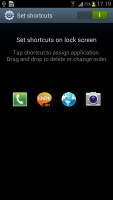



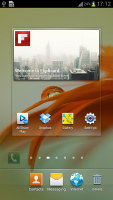







































































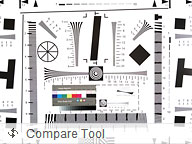
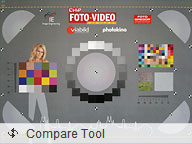



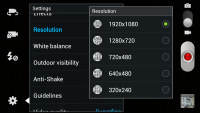



























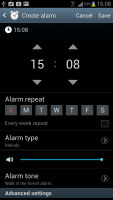
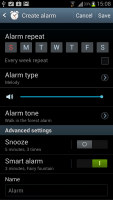

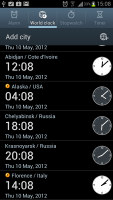
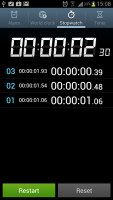
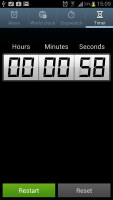

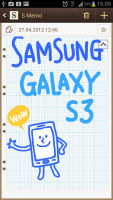

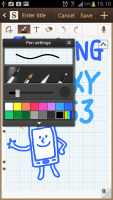

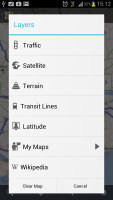
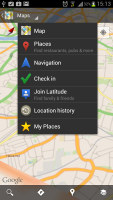
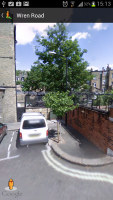
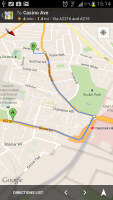




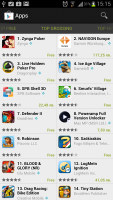
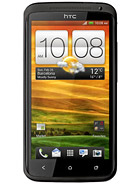
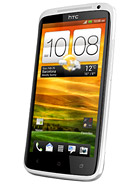
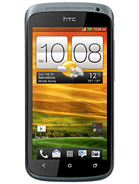
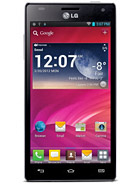
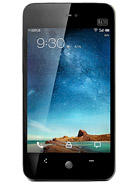
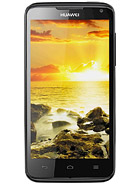
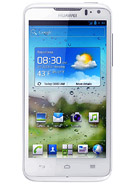
No comments:
Post a Comment